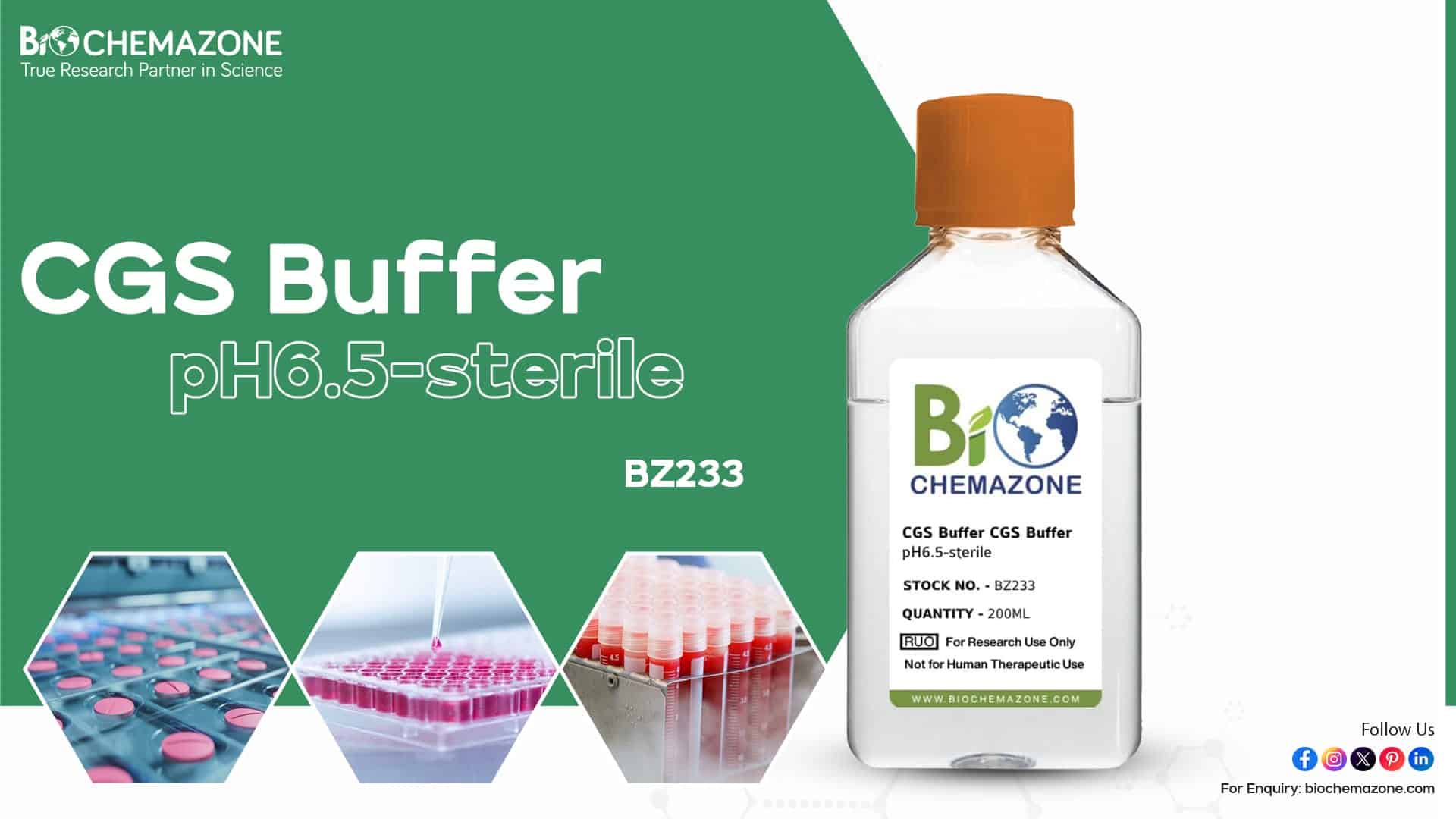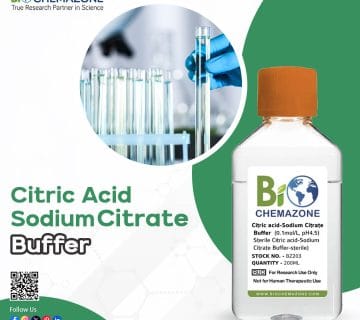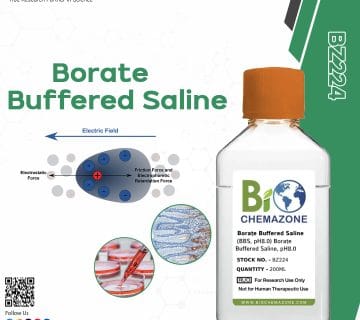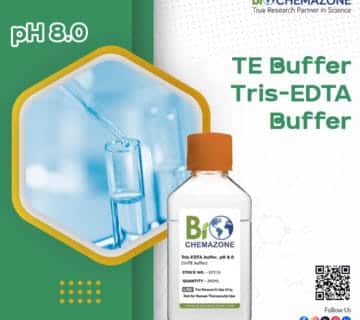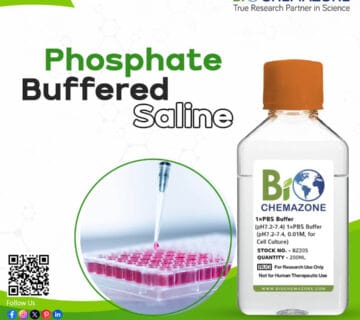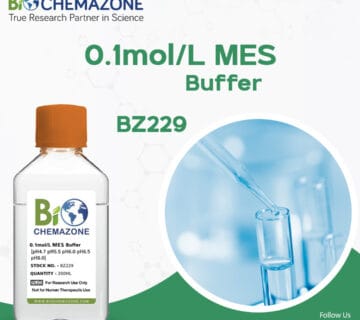CGS Buffer pH6.5-Sterile (BZ233): Essential for Platelet Washing and Experimental Research
Platelet washing is a crucial step in experimental research, influencing the integrity and function of platelets. The use of an appropriate buffer solution is vital in maintaining the physiological conditions necessary for platelet studies. One such buffer widely utilized in research is CGS Buffer pH6.5-Sterile (BZ233). This specialized buffer plays a significant role in platelet preparation by ensuring minimal alterations in platelet function and responsiveness.
In this article, we will explore the importance of CGS Buffer, its composition, applications in platelet washing, and the impact it has on ADP-mediated platelet responsiveness.
Understanding the Role of CGS Buffer pH6.5-Sterile (BZ233) in Platelet Washing
Washing procedures significantly affect the function and integrity of platelets, making the selection of an appropriate buffer crucial. CGS Buffer pH6.5-Sterile (BZ233) serves as a key medium in preparing washed platelets, ensuring that they maintain their responsiveness and physiological behavior.
What Is CGS Buffer pH6.5-Sterile (BZ233)?
CGS Buffer is a sterile solution optimized for platelet washing. It contains a balanced combination of:
- Sodium chloride – Maintains osmotic balance
- D-glucose – Provides an energy source
- Trisodium citrate – Acts as an anticoagulant to prevent platelet aggregation
This specific composition allows researchers to prepare platelets in a controlled environment, reducing unwanted activation and functional alterations.
To explore the detailed specifications and pricing, visit: https://biochemazone.com/product/cgs-buffer-ph6-5-sterile-bz233/
Why Platelet Washing Is Critical in Research
Platelets are essential for both hemostasis and thrombosis. When conducting experiments, it is essential to obtain washed platelets that reflect their natural behavior without artificial activation.
The Impact of Washing on Platelet Function
Washing platelets can introduce changes in their responsiveness, particularly in their reaction to adenosine diphosphate (ADP), which is a key activator of platelet aggregation. A study examining the Role of Purinergic Receptor Expression and Function for Reduced Responsiveness to Adenosine Diphosphate in Washed Human Platelets (PMID: 26808867) highlighted that washed platelets exhibit reduced sensitivity to ADP compared to freshly prepared platelet-rich plasma (PRP).
This alteration could be attributed to:
- Loss of essential plasma proteins
- Changes in receptor expression
- Alterations in intracellular signaling pathways
By using CGS Buffer pH6.5-Sterile (BZ233), researchers can mitigate some of these effects, ensuring platelets maintain their native state as much as possible.
Storage Conditions for Washed Platelets and PRP
The study referenced above also evaluated the impact of different storage conditions on platelet function. Both PRP and washed platelets suspended in HEPES buffer were stored at 22°C without agitation under identical conditions. The results indicated that washed platelets demonstrated reduced responsiveness over time, emphasizing the importance of selecting the right buffer and storage conditions.
Key Benefits of Using CGS Buffer pH6.5-Sterile (BZ233) in Platelet Preparation
1. Maintains Platelet Integrity
The carefully formulated composition of CGS Buffer ensures that platelets retain their shape and function without undergoing premature activation or damage.
2. Prevents Unwanted Aggregation
Trisodium citrate acts as an anticoagulant, preventing clot formation during platelet washing and storage.
3. Provides Essential Nutrients
D-glucose in the buffer serves as an energy source, supporting the metabolic needs of platelets during experiments.
4. Ensures Reliable Experimental Results
By minimizing alterations in platelet function, CGS Buffer helps researchers obtain reproducible and accurate data in platelet-related studies.
Applications of CGS Buffer pH6.5-Sterile (BZ233) in Experimental Research
1. Platelet Function Studies
Researchers studying platelet aggregation, adhesion, and secretion use CGS Buffer to maintain the physiological behavior of washed platelets.
2. Drug Testing and Pharmacological Research
When testing anti-platelet drugs, it is crucial to use a reliable buffer to ensure accurate measurements of drug effects.
3. Thrombosis and Hemostasis Research
Understanding clot formation and platelet interactions requires a buffer that does not interfere with platelet function.
4. Cell Signaling and Molecular Biology Studies
Washed platelets are frequently used in signaling pathway investigations, making CGS Buffer an essential component in maintaining cellular integrity.
How to Use CGS Buffer pH6.5-Sterile (BZ233) Effectively
For optimal results, researchers should follow these steps when using CGS Buffer pH6.5-Sterile (BZ233):
- Prepare platelet-rich plasma (PRP) from whole blood using centrifugation.
- Wash the platelets by resuspending them in CGS Buffer pH6.5-Sterile (BZ233).
- Centrifuge and repeat the washing process if necessary.
- Resuspend washed platelets in an appropriate medium (e.g., HEPES buffer) for storage or immediate use.
- Store at 22°C without agitation for short-term experiments.
Where to Buy CGS Buffer pH6.5-Sterile (BZ233)
If you are looking for a high-quality buffer for your research, you can purchase CGS Buffer pH6.5-Sterile (BZ233) from Biochemazone™. Their sterile and precisely formulated buffer ensures optimal platelet preparation for reliable experimental outcomes.
Final Thoughts
The use of CGS Buffer pH6.5-Sterile (BZ233) is essential in platelet research, helping maintain platelet integrity, preventing unwanted activation, and ensuring reliable results. Whether studying platelet function, drug effects, or thrombosis mechanisms, this buffer plays a crucial role in experimental success.
By choosing a high-quality buffer like CGS Buffer pH6.5-Sterile (BZ233), researchers can enhance the accuracy and reproducibility of their platelet-related experiments.
Frequently Asked Questions (FAQs)
1. What is CGS Buffer pH6.5-Sterile (BZ233) used for?
CGS Buffer pH6.5-Sterile (BZ233) is primarily used in experimental research for washing platelets. It helps maintain platelet integrity and function, reducing the risk of unwanted activation during preparation.
2. What are the main components of CGS Buffer pH6.5-Sterile (BZ233)?
This buffer contains sodium chloride, D-glucose, and trisodium citrate. These components help in maintaining osmotic balance, providing energy to platelets, and preventing clot formation, respectively.
3. How does CGS Buffer pH6.5-Sterile (BZ233) impact platelet function?
Using CGS Buffer helps ensure minimal alterations in platelet function. It prevents early activation and maintains the responsiveness of platelets to agonists like ADP, which is essential for accurate experimental results.
4. What is the ideal storage condition for washed platelets?
Washed platelets should be stored at 22°C without agitation in an appropriate buffer like HEPES to maintain their function for experimental studies.
5. Where can I purchase CGS Buffer pH6.5-Sterile (BZ233)?
You can buy CGS Buffer pH6.5-Sterile (BZ233) from Biochemazone™, a trusted supplier of high-quality laboratory reagents and buffers.
6. Why is platelet washing necessary in research?
Washing platelets removes plasma proteins and other components that may interfere with experiments. It helps researchers study platelet function in a controlled environment without unwanted factors affecting results.

